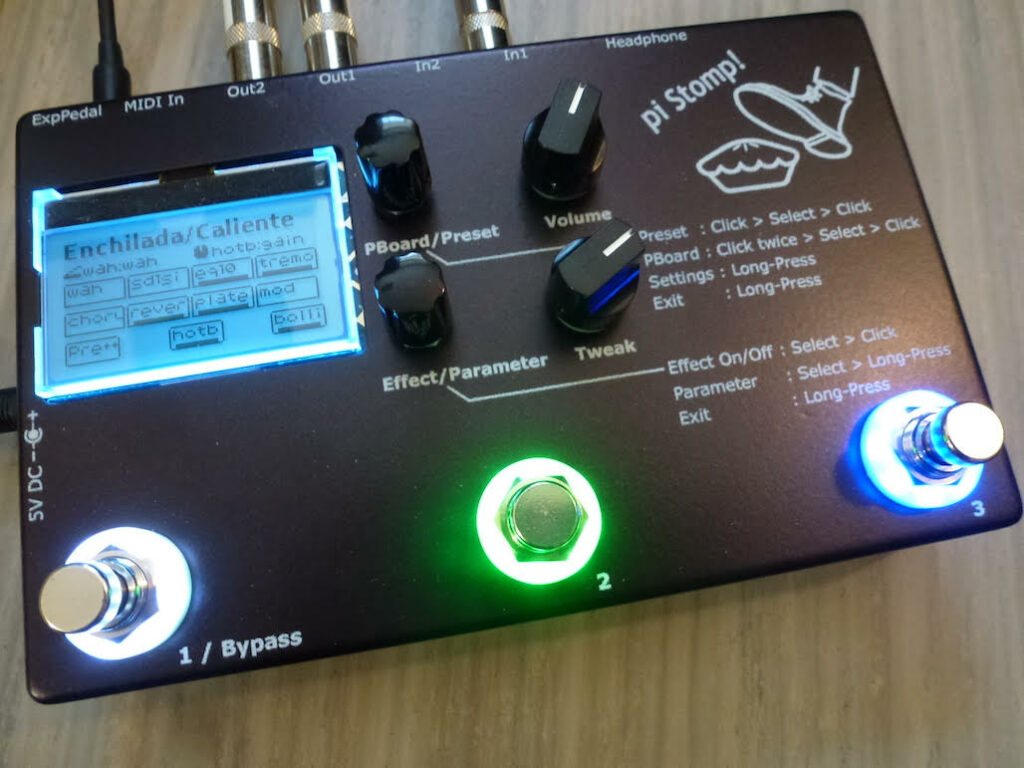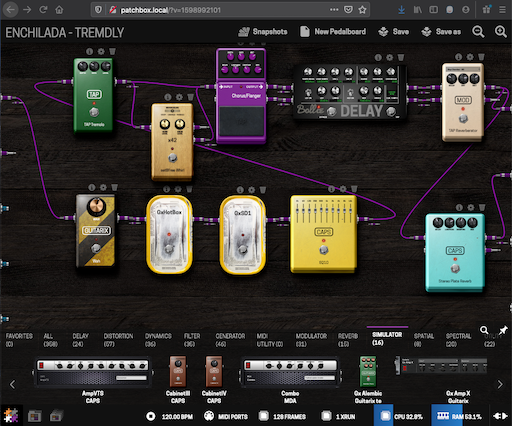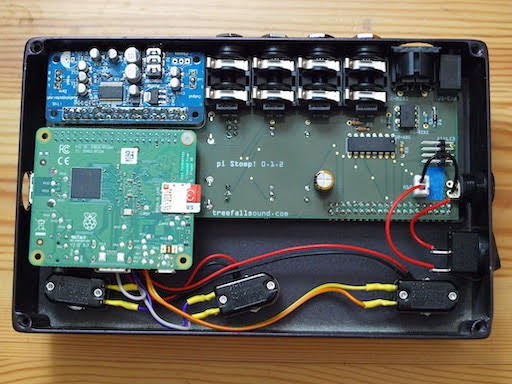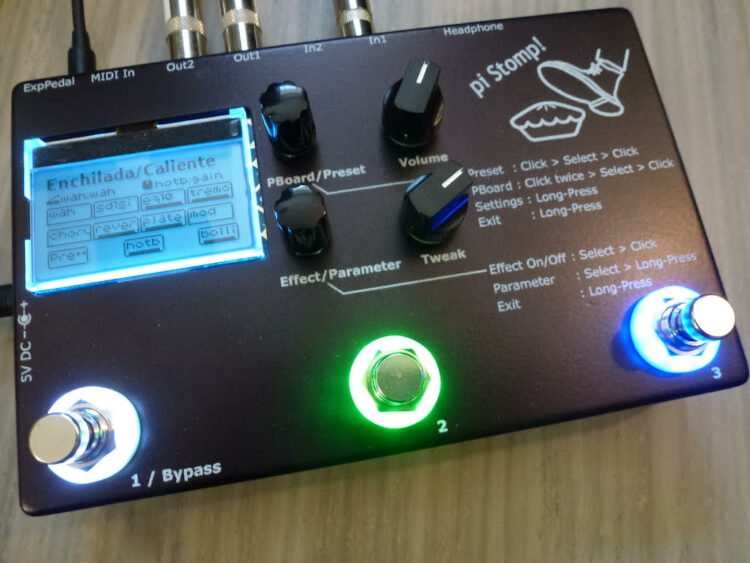This post may contain affiliate links
What is the pi-Stomp?
pi-Stomp is a high definition multi-effects stompbox platform with DIY hardware and free open-source software. And with some decent soldering skills, you could build your own.
The pi-Stomp allows you to create virtual pedalboards using MOD, a powerful, easy-to-use drag and drop web interface, and then save them into the pi-Stomp pedal to recall at any time – whether that’s on stage, in the studio, or at home.
The MOD interface has hundreds of pedal plugins to chose from. Including:
- 57 Overdrive, Distortion and Fuzz
- 23 Dynamic (Compressor, Limiter, DeEsser)
- 35 Filter (EQ, Filters, Wah, etc.)
- 46 Generator (Synth, Sampler, Drumkit, General Midi modules, etc.)
- 31 Modulation (Chorus, Flanger, Phaser, Ring Modulation, Rotary, Tremolo, Vibrato, etc.)
- 15 Reverb
- 24 Delay
- 29 Simulator (Preamps, Amps, Cabinets)
- 8 Spacial (Stereo panning and imaging)
- 20 Spectral (Pitch Shifting, Doubler, Harmonizer, Vocoder)
- 22 Utility (Midi, Noisegate, Gain, Phrase Looper, Sequencer, Switching, Tuner, etc.)
And once you’ve created your virtual pedalboards, you can use the controls on the front of the pedal to scroll between pedalboards and presets, toggle pedals on and off, tweak settings, and more.

Here’s a look at what you’ll see when using the MOD virtual interface:

And here’s a look at the internal hardware of the pi-Stomp:

- Dual ins/outs, 24-bit, 96kHz stereo audio
- Raspberry Pi 1.4 GHz 64-bit quad-core processor
- Three click-less footswitches with LED halos
- Buffered input with true bypass via latching relays
- Rugged aluminum powder-coated enclosure with UV printed graphics

